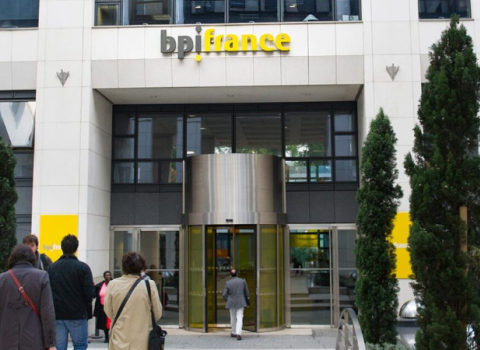
Bruno van Pottelsberghe
Patent systems have been created to give the private sector an incentive to innovate. The patent deal grants a monopolistic power to the inventor for the exploitation of his or her invention, in exchange for the publication of the invention and some renewal fees, for a period of about 20 years.
In order to be granted, the submitted file must be novel with respect to the state of the art and have a sufficient inventive step. If this definition is similar in Europe and in the US, its implementation is not. The design of the patent system in the two is diametrically opposed, hence leading to different ‘diseases’ that now need to be cured.
The US Patent and Trademark Office (USPTO) is currently suffocating under its backlog of several hundreds of thousands files waiting to be granted. The US system naturally led to this patent bubble. First, patent are so cheap that anyone with a mere innovative idea, or with a creative joke in mind, or even with a troll-minded will to patent a known technology, is stimulated to file an application.
Second, patents in the US are very easy to get issued, because of a ‘soft’ search for prior art and a low quality examination service – for evidence of this look no further that the $612 million payment to the patent holding company NTP Inc by Research in Motion, manufacturer of the Blackberry wireless email device, for infringement of five patents that should not have been granted in the first instance.
Easy-to-get and cheap patents have led to a constant inflation in applications of dubious quality: if issued patents are enforced, companies must logically rely aggressively on the patent system in order to avoid hold-ups. The bottom line: a vicious cycle that is currently translating into around one million patents waiting to be granted.
Europe bogged down by fragmentation
In Europe meanwhile, filing and examination fees are much higher, and they correlate with a high quality examination of patent applications. Higher fees make it possible to pay examiners more, and on average they have many years of experience. While staff turnover at the European Patent Office (EPO) is about 3 per cent, at the USPTO it is 30 – 40 per cent.
But the weakness of the European system is that it is bogged down by fragmentation. After over 40 years of failed attempts to create a European Community patent, success now would be a timely and powerful symbol of a European will to throw off the financial crisis and become an innovation-driven economic area.
To date the European patent system is a sorry tale of botched public cooperation. The fragmentation cancels out the potentially stimulating effect of high-quality examination.
First: once granted a patent must be validated and renewed separately in each of the desired 35 signatory countries of the European Patent Convention.
Second: national patent offices and national courts have the final say in upholding or invalidating patents, regardless of the verdict of the EPO.
Third: parallel national routes to patenting allow applicants to get around the EPO and hence implicitly reduce quality in the whole system. Applicants can take an each way bet against a negative decision at the EPO by ‘going national’.
This makes the European patent system akin to the proverbial Swiss cheese – full of holes. And quite apart from producing a high level of uncertainty, the system is prohibitively expensive and very complex to manage. Bottom line: it is not attractive, it discourages small firms in particular, it is a tax on innovation where it should actually be an incentive, and it hinders the development of a truly European market for technology.
Forty years of waiting for a Community patent
So why has the Community patent been blocked for 40 years? Key stakeholders have an institutional or professional interest in the failure of the Community patent. For lawyers it would mean less business (because there will be less parallel litigation); for patent attorneys it would correlate with less intermediation and fewer translations (that are hardly ever read); for national patent offices it would mean a loss of power and control (and the ‘paradoxical’ fear of loss of revenue).
Yet loss of revenue is the elephant in the room and is rarely officially acknowledged as the main obstacle to acceptance of the Community patent. Lobbies instead hide behind the fig leaf of an unresolved language dispute, lack of agreement on the detail of a centralised litigation system and even the potential bankruptcy of the EPO.
These arguments prevail despite the fact that they are unwarranted and can easily be countered. Translation issues can be solved by machine translation of claims, while according to our recent estimates the budgets of national patent offices and of the EPO would both be better off with the Community patent.
Mutual aid
Can the USPTO and EPO help each other through work sharing or mutual recognition practices? It could indeed make sense, but only if the two systems first converge in terms of design (including structure, quality and fees). In the US this would require a drastic revision of the patent system, with higher rigour in the examination process and correspondingly higher fees.
In Europe it would require political leadership to implement the Community patent and embrace a truly centralised patent system that could be leveraged by small innovators. To achieve an effective decision-making process the governance of the EPO should also be substantially revised and simplified, with less member states representatives but including several stakeholders and several EC Directorates General [1].
Related article
Bruno van Pottelsberghe is Senior Fellow at Bruegel and Professor at Université Libre de Bruxelles, Solvay Brussels School of Economics and Management.
[1] Bruno van Pottelsberghe, 2009, “Lost property: why the European patent system doesn’t work” Bruegel Blueprint, available at www.bruegel.org.”





 A unique international forum for public research organisations and companies to connect their external engagement with strategic interests around their R&D system.
A unique international forum for public research organisations and companies to connect their external engagement with strategic interests around their R&D system.